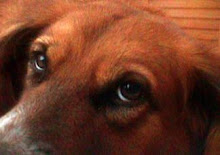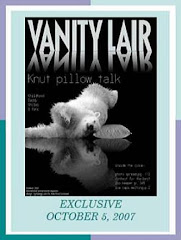Jede Freundschaft wird intensiver, wenn das Eis erst mal gebrochen ist. In der Beziehung zwischen Malcolm Ramsay und seiner dickfelligen Freundin Nanuka ist es genau umgekehrt: Wenn im Frühjahr endlich das Eis bricht, liegen elf Monate der Trennung vor ihnen. Nanuka wird umherziehen, einen Partner suchen und sich von ihm trennen, sobald sie schwanger ist. Malcolm wird in der Zeit als Wissenschaftler an der Universität in Saskatchewan in Kanada lehren. Als Zoologe weiß er, das Mensch und Eisbär keine Freunde sein können – eigentlich. Als Mensch hat er erfahren, daß die Wirklichkeit aufregende Ausnahmen zulässt.
Mit einem Kollegen war Malcolm vor fünf Jahren auf dem Eis der arktischen Barrow Strait, um Eisbären zu beobachten. Sie hörten jammervolle Schreie, und an einem Eisloch fanden sie ein Eisbärjunges in der Falle. Die hatten Inuit-Jäger aufgestellt, um Robben zu fangen. Das ist Eskimos erlaubt, selbst wenn oft Eisbären darin verenden. Die Mutter irrte verzweifelt um ihr Junges herum. Malcolm schoß einen Narkosepfeil ab, und als sie betäubt dalag, befreiten sie das Junge. Malcolm nah es auf den Arm um es zu vermessen, wiegen und mit einer Marke versehen zu können. Dann ließ er es frei. Als die Mutter erwachte, beschnupperte sie ihr Junges und warf den Männern im Eismobil einen langen Blick zu. Vor der Eisschmelze erkannte Malcolm Nanuka (Inuit: Eisbärin) in der Nähe seiner winterlichen Forschungsstation wieder. Malcolm fuhr mit dem Buggy an sie heran und öffnete das Fenster – ein Impuls. „Völlig irre“, sagte er, „Ich weiß, dass das lebensgefährlich ist. Aber sie steckte den Kopf herein, beschnupperte mich und sah mich an. Es wirkte fast, als wollte sie sich bedanken. Das macht Nanuka immer nur einmal in jedem Frühjahr. Wenige Tage danach bricht das Eis, und sie zieht fort.“
von T.F. Emmiot

Every friendship is getting more intensive when ‘the ice is broken’. In the relationship between Malcolm Ramsay and his thick fured girl friend Nanuka it is just conversely: when finally in spring time the ice is breaking 11months of separation are in front of them. Nanuka will wander around, looking for a partner, seperating again as soon as she is pregnant. Malcolm during this time will teach as a researcher (scientist) at the University of Saskatchewan in Canada. As a zoologist he knows, that polar bears and humans can´t become friends – actually. As human being he experienced that there can be exciting exceptions in reality.
Five years ago Malcolm was together with a colleague in the ice of the arctic Barrow Strait to watch polar bears. They heard wretchedly cries and at an icehole they found a polar bear baby in a trap. The Inuit-hunters had put the trap to catch seals, This is allowed to the Eskimos, even if often polar bears die in it. The mother wandered distressed around her baby. Malcolm shot an narcosis arrow and as she was lying there anaesthesized they rescued the baby. Malcolm took it on his arm to measure it, to weigh and to tag it. Than he let it free.
As the mother awaked, she sniffed at her baby and gave a long look to the men in the icevan. Before the thaw Malcolm recognized Nanuka (Inuit: female polar bear) near his winter scientific base. Malcolm drove with the buggy to her and opened the window – by impulse. “Completely crazy” he said, “I know, that this is perilous. But she put her head in, sniffered at me and looked at me. It looked like as if she wanted to thank me. This Nanuka is doing only one time in every spring. Few days later the ice is breaking and she is moving on.”
by T.F. Emmiot
German article here posted by Uli S in Hartmuth's forum
English translated version (Brit) here in Mervi's newest edition ofKnuti's Weekly
Thank you, Uli S. and Mervi!
 ...mit diesen Worten schließt Knuts Headquarter seine Pforten um Mitternacht. Es ist aus verschiedenen Gründen kein leichter Moment und noch immer habe ich selbst 2 Stunden vorher nicht meine Verabschiedung gemacht. Mein Herz ist mindestens so schwer wie die Musik, die Bauz ausgewählt hat um Doro und Torsten Farewell zu wünschen und Danke zu sagen für die Plattform, die sie uns über den rbb so liebevoll gewährt und bereitet haben.
...mit diesen Worten schließt Knuts Headquarter seine Pforten um Mitternacht. Es ist aus verschiedenen Gründen kein leichter Moment und noch immer habe ich selbst 2 Stunden vorher nicht meine Verabschiedung gemacht. Mein Herz ist mindestens so schwer wie die Musik, die Bauz ausgewählt hat um Doro und Torsten Farewell zu wünschen und Danke zu sagen für die Plattform, die sie uns über den rbb so liebevoll gewährt und bereitet haben. Heimat ist da, wo es Fisch gibt...Ok,Ok, es war ja nur ein Vorschlag...!
Heimat ist da, wo es Fisch gibt...Ok,Ok, es war ja nur ein Vorschlag...!



























































































